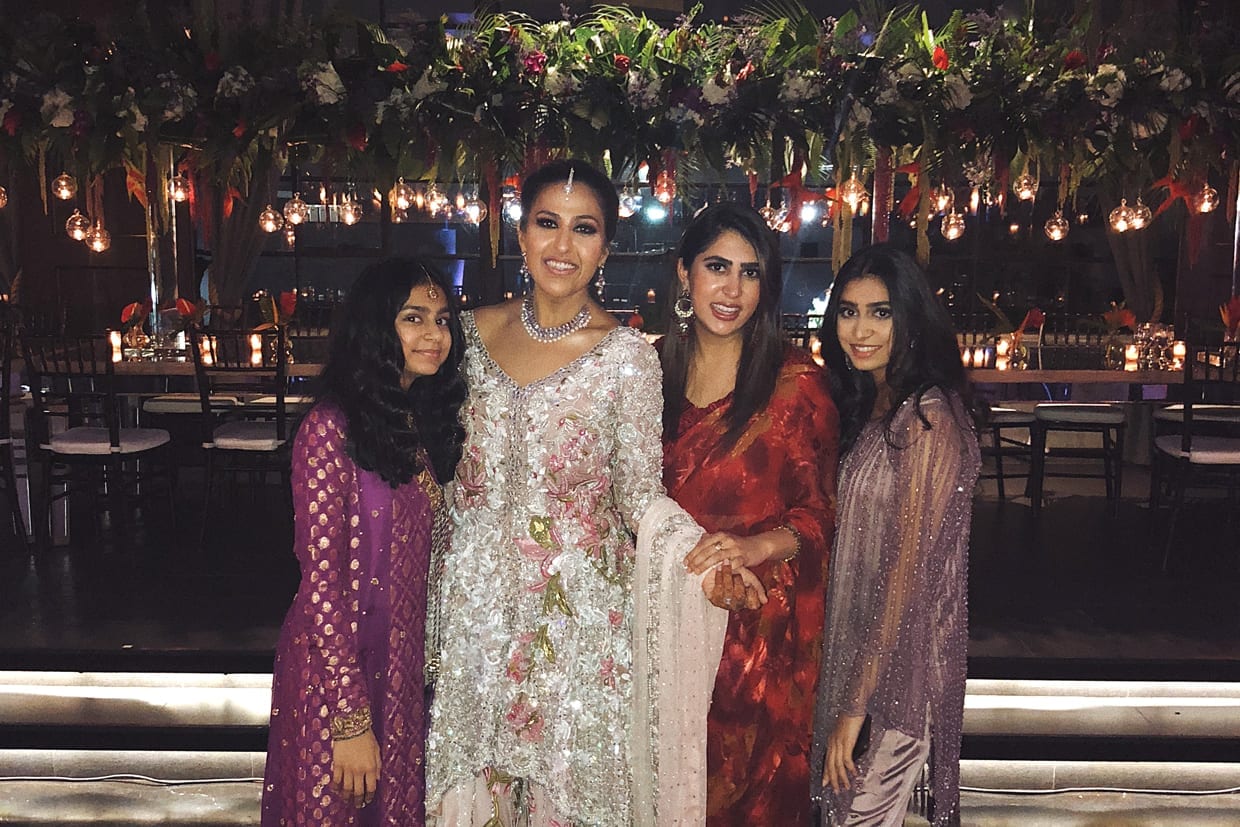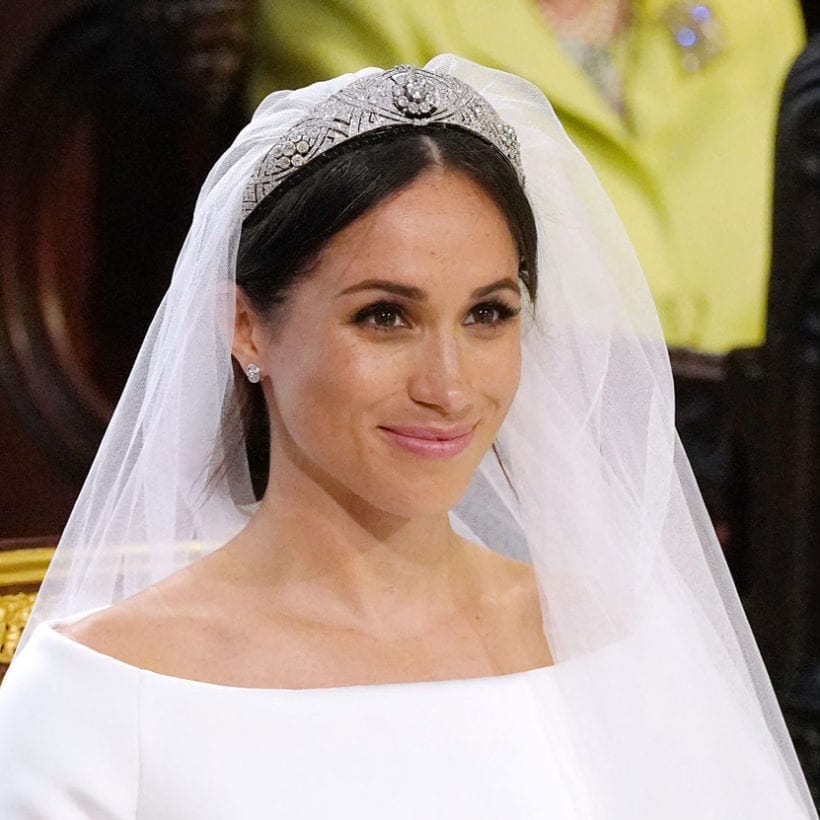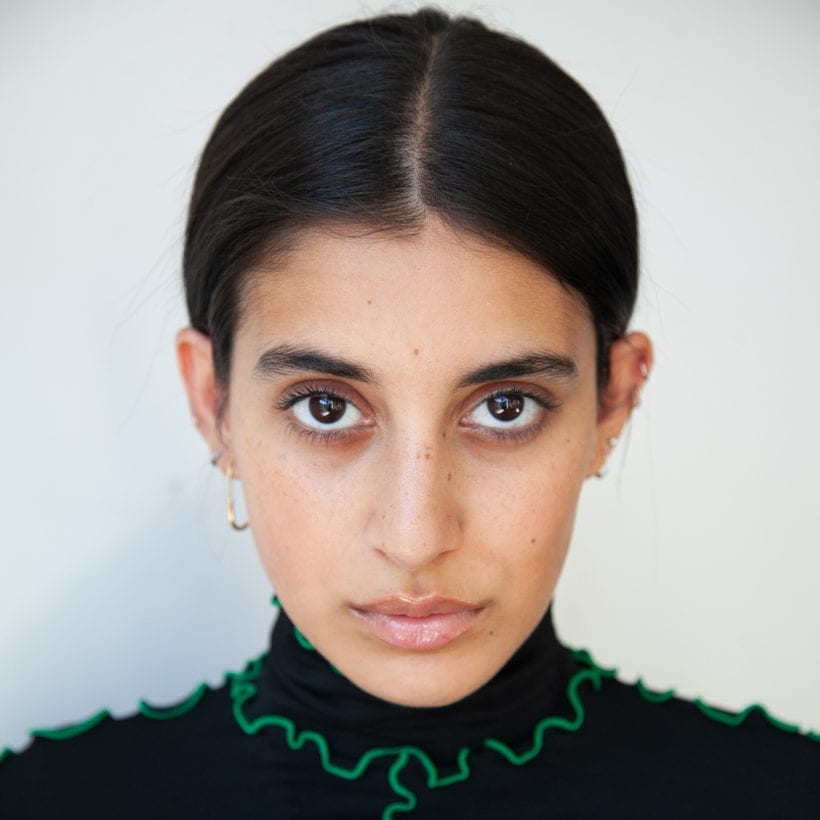Last year, I attended 27 wedding events. And all of them were Indian or Pakistani, where traditions lean heavily into the theme of opulence (once there was a horse in the driveway).
You are immediately transported from your dull ordinary life to somewhere else when you enter the banquet hall surrounded by vibrant colors, intricate outfits, gold jewelry, and choreographed dance performances. According to The Hindu Business Line, the Indian wedding market is estimated at $50 billion and growing at an estimated 20 percent per year.
For as long as I can remember — thanks to an early introduction to this opulence — I have always had a clear vision of what I wanted my big day(s) to look like. I grew up on Bollywood movies with their elaborate dance numbers, grand proclamations of love and series of endless meet cutes — meeting on a train, dancing in a field, a boy’s outfit getting snagged onto your bangle. And because Netflix was not the giant it is now, I was also an avid watcher of “Say Yes to The Dress,” “Four Weddings” and “My Fair Wedding” with David Tutera. My concept of love has been interwoven together with weddings since I was a little girl.
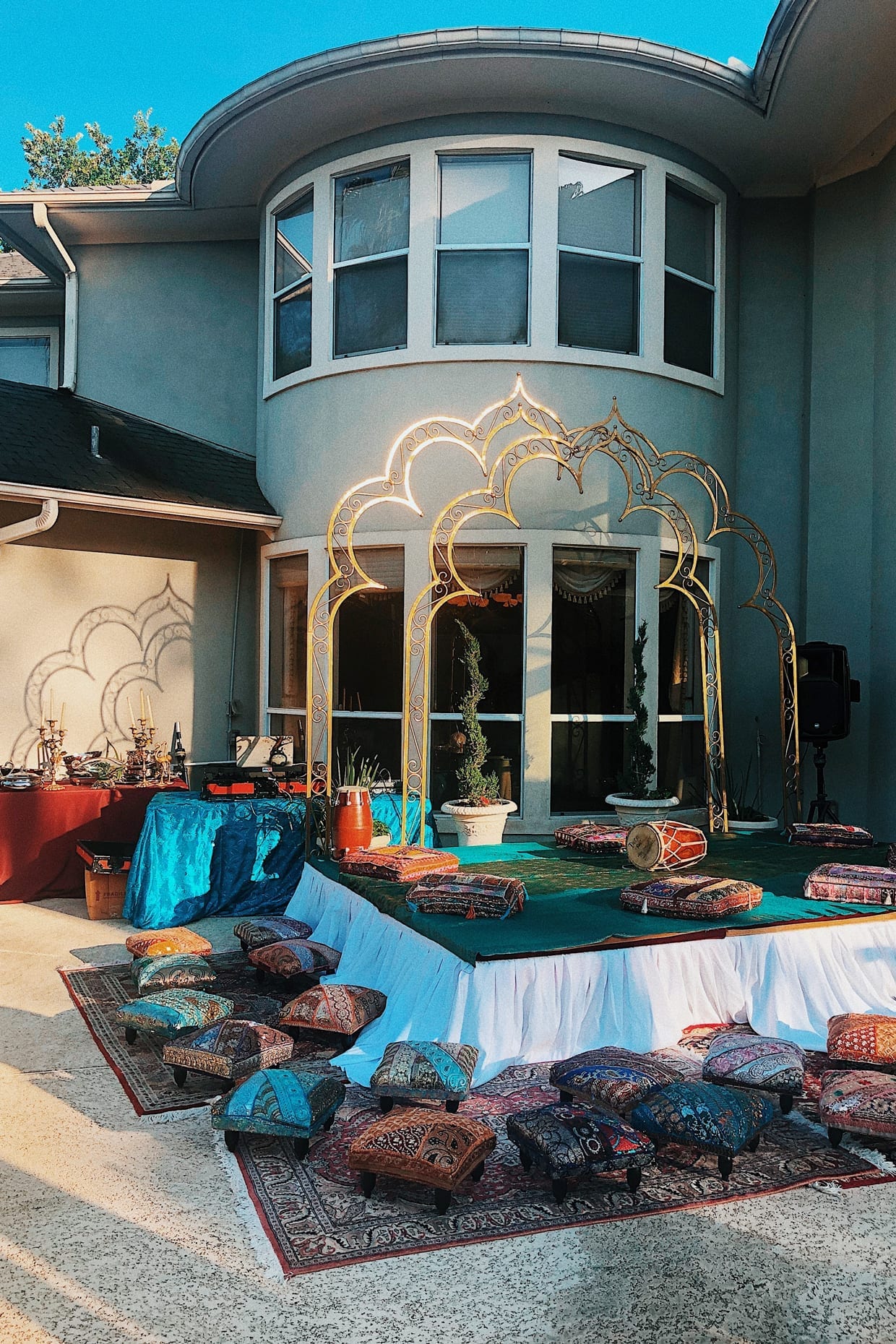
And, when I think about getting married, I always jump to what my exit song will be, which designer I will choose and what our clever hashtag could be — never the fact that I am about to spend the rest of my life with someone else. I completely disregard that weddings are about more than glitz and glamour.
Perhaps this is because each wedding I attend seems to top the one prior. From live cooking stations to entering on a horse/elephant/hoverboard, to flying off in a helicopter — I have seen it all. That is, until the next. In the age of Instagram, it often seems as though weddings have turned into production, too worried about what other people will think. The dark underbelly reveals itself: that a lot of the time it is merely a competition to win the title of “wedding of the year” rather than a celebration of the union of two people who love each other.
But our wedding events are deep-rooted in traditions and culture — this nostalgia for the motherland. If you live in a city with a large community, you will likely be forced to invite all of them to your wedding. You Google hotels that can fit up to 1,000 people because this is your parents’ one opportunity to “feed guests back” for all the events they themselves have attended.
Those who were once unaware of the “Big Fat Indian Wedding” had their eyes opened when Priyanka Chopra and Nick Jonas got married this past December. The couple exchanged vows at Umaid Bhawan Palace in Jodhpur, which is a reported $60,000 a night venue. Her bespoke lengha was designed by Sabyasachi and took 110 embroiders and 3,270 hours to create.
When the illusion of a fancy wedding dissipates you are back to square one, this time with someone by your side. Choose wisely.
While this sounds like something straight out of a fairytale, these large-scale weddings happen quite regularly. The engaged couple begins planning over a year in advance and dance-practices begin months prior. The bride flies overseas to India or Pakistan to get her outfits custom made (anywhere from one to five), upwards of up to $50,000 depending on the designer you choose. As a guest, you have the option to get traditional gowns sent to you from overseas or you can purchase them at an inflated price from different exhibitions in the States.
If you have never been to one, the week’s agenda typically begins with an event (Mehndi or Sangeet) dedicated to dancing. Bollywood’s strong influence is often showcased at this event with music, skits and dance routines. The wedding party works together to perform dances they have choreographed and the night ends with an open dance floor. More traditional families may choose to forego this, but as with anything, it truly depends on case by case.
The following day, there is a smaller religious event, the Nikah ceremony, in which the couple signs the official paperwork — often held at the mosque. A large reception (a Shaadi) follows either that same evening or the next, in which the bride and groom sit on a stage. Everything else that follows is similar to that of an American wedding: speeches, cake-cutting ceremony, a first dance. It varies, but you can see anything from bouquet tosses and wedding vows to feeding the couple sweets and stealing the groom’s shoes. But never believe the time on the card, Desi standard time (DST) requires you to arrive approximately two hours late. There is always one table that arrives far too early because they are friends from college who were not forewarned. The food — rice, curries, chicken — is almost always served buffet style. Helpful place cards describe the dishes for those who may not understand what on earth is being served, although if you take too long to read them people will begin to cut you. Contrary to what they might say, patience is not a virtue in the buffet line.
And oftentimes, throughout all of this, my insecurities are magnified — there is a lot of pressure to look as perfect as possible. A lot of pictures are taken at these events (you did not get your hair, nails and henna done for nothing).
But I do not remember when it became a competition not only for brides but for guests, too.
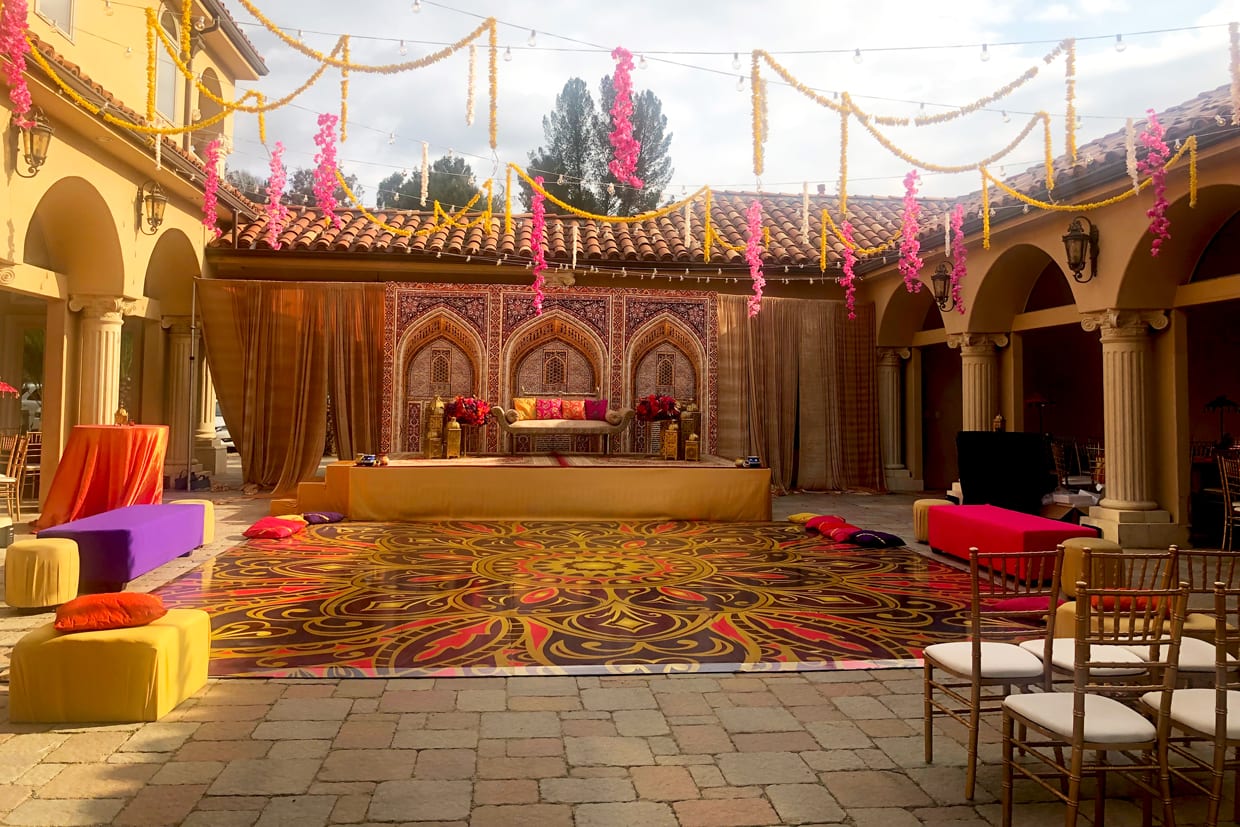
I have deluded myself into wanting to settle down quickly so I too can look as happy as the brides do perch up on that stage. You experience so much euphoria at your friends’ events that you wonder when it will be your turn. I will wholeheartedly be enjoying my singledom, that is, until I attend yet another wedding that pulls at my heartstrings: the instrumental music remixes, the bridal entrance, the outpouring of love and the cliché bridal party speeches.
My mom got married when she was 18 years old. My parents have been together for nearly 25 years now, and they complete each other. They very rarely talk about their wedding, a simple few events where my mom wore a bright red outfit with a fake nose ring at a small outdoor venue in Pakistan. They do, however, talk about their first date where my dad took her to a Japanese restaurant that she pretended to like. They talk about what it was like moving to another country where they had to start over with no one. They discuss the happiness they felt when their kids were born, their first home, and what it was like sending us off to school for the first time. Once the big day is over, you are simply alone with the person you chose to partner up with. When the illusion of a fancy wedding dissipates you are back to square one, this time with someone by your side. Choose wisely. Do not let wedding fever pressure you into an extravaganza you can’t afford or a lifetime with someone you did not take the time to get to know properly.
We only recommend products we have independently researched, tested, and loved. If you purchase a product found through our links, Sunday Edit may earn an affiliate commission.
